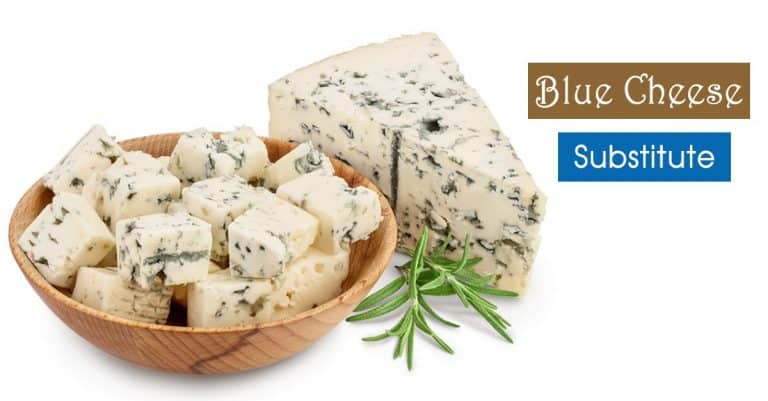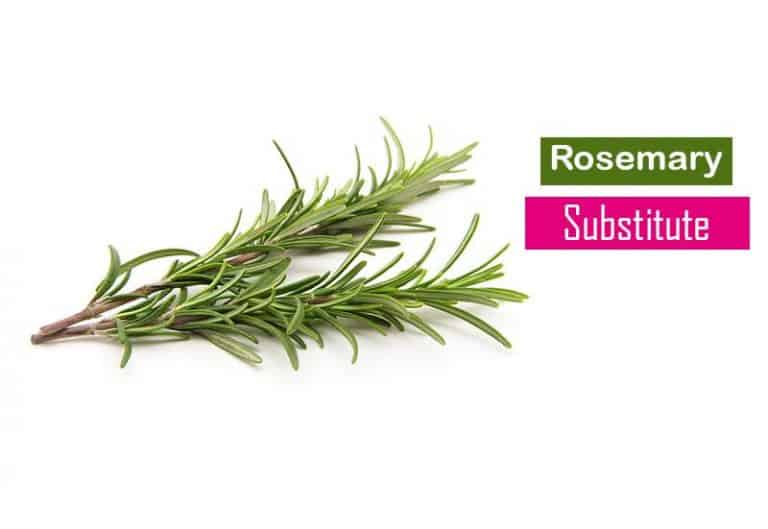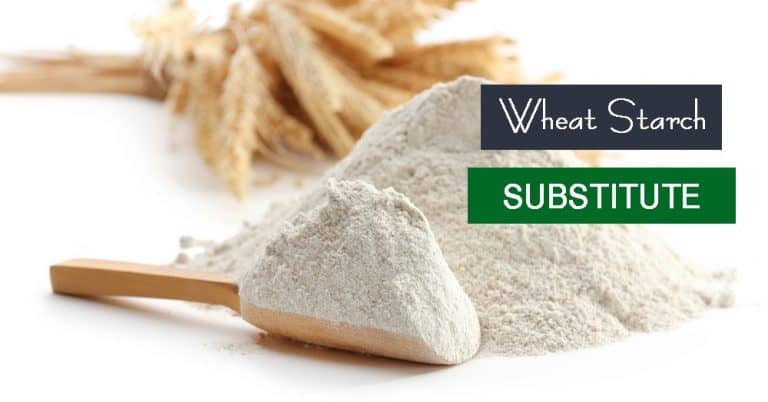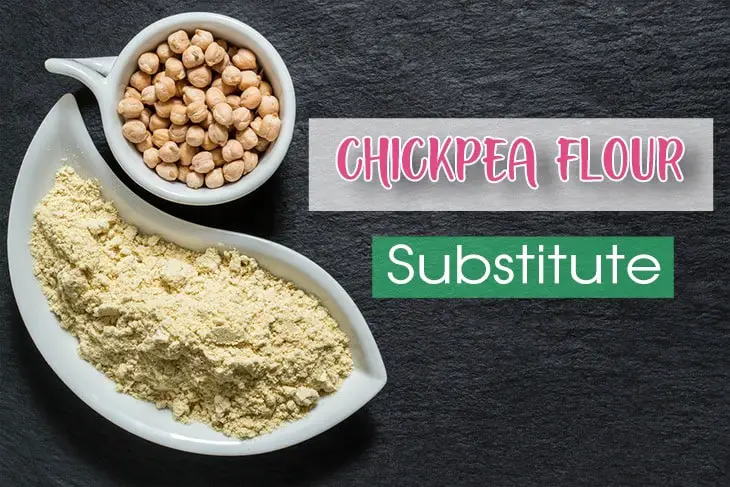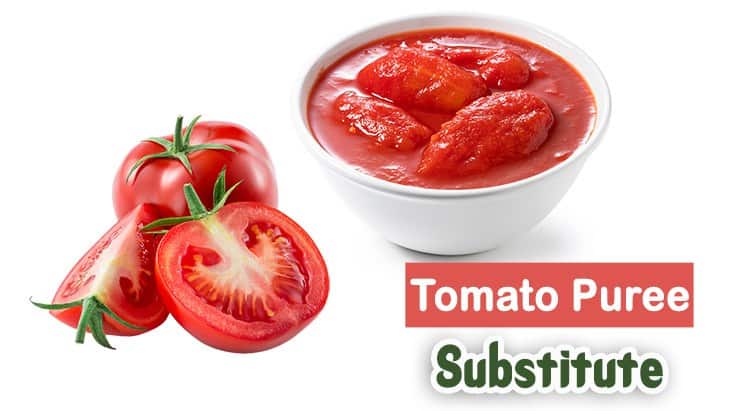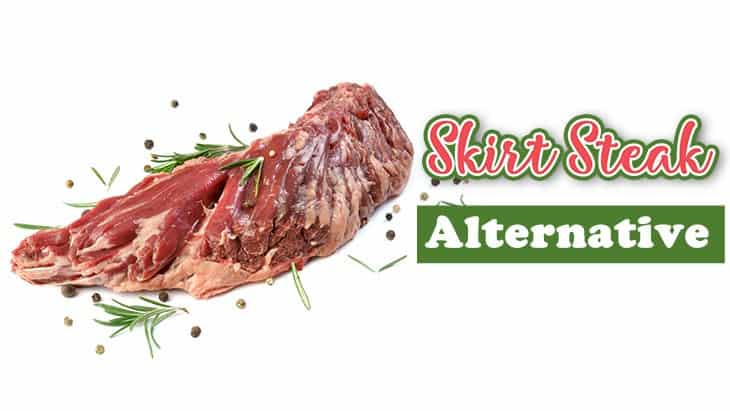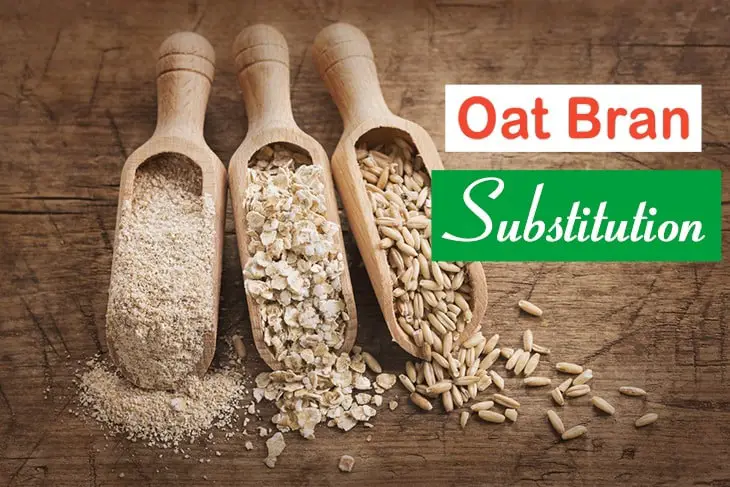
Things can go wrong if you lack some ingredients when cooking. Therefore, finding alternatives is incredibly important. In this article, we introduce you to 10 ideas for oat bran substitution.
Oat bran appears in many sweet recipes, such as muffins, pancakes, bread, or cookies. And breakfast with oat bran cereal is really a power booster with a rich nutritional profile.
But not everyone is fond of oat bran or can find it in their kitchen when needed. This is when our article comes in handy. Let’s check it out!
Top 10 Options For Oat Bran Substitution
You prefer a healthy meal but can’t put your hand on oat bran? Try these alternatives instead.
1. Wheat Bran
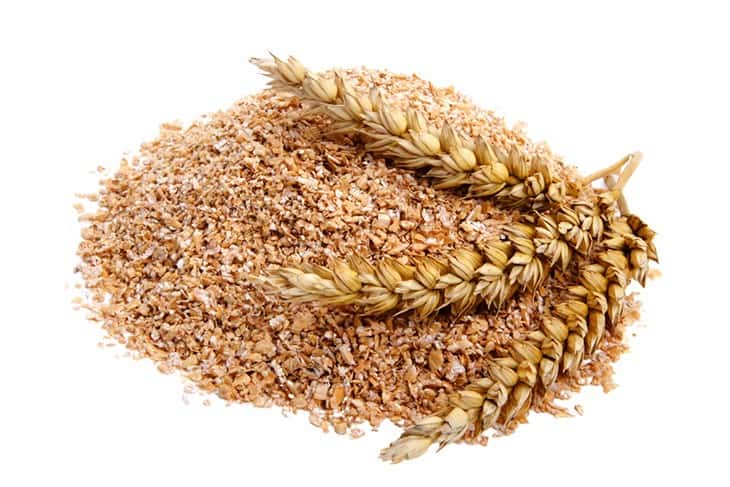
Wheat bran is also the outer layer of wheat kernels but somewhat harder and drier than oat bran. These two are rich in fiber, so you can easily interchange them in a dietary meal.
You can’t expect an appealing flavor like oat bran, but wheat bran brings an earthy flavor and a pleasant aroma. One cup of wheat bran is equal to one cup of oat bran. Because of its drier texture, remember to add some more liquid when cooking wheat bran.
Wheat bran can pop up in breakfast cereals and sweet dishes calling for oat bran, such as cookies, muffins, waffles, or pancakes. You can find this ingredient in some smoothies as well, but it must be finely ground.
Thanks to its fiber content, wheat bran aids in weight loss, digestive health, and lowering cholesterol. One serving of wheat bran can fulfill 1/5 of the daily amount of vitamin B12, boosting red blood cell formation.
2. Oatmeal
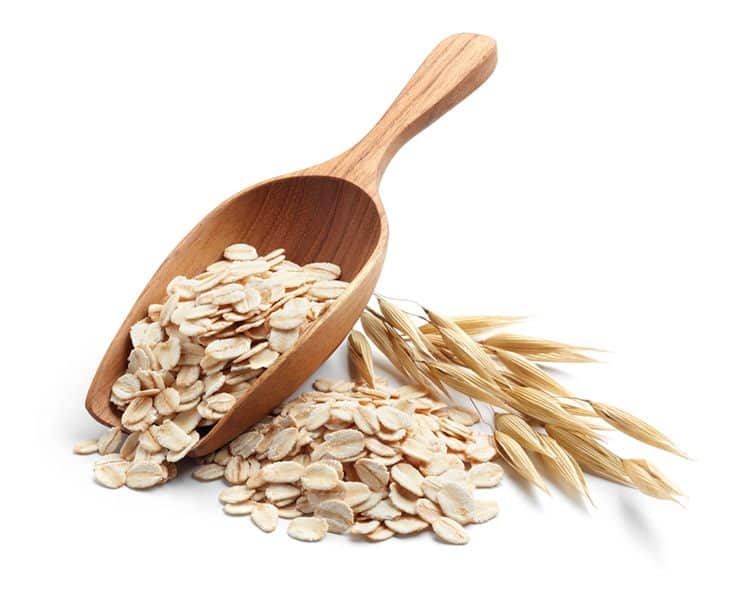
If wheat bran resembles the texture, oatmeal almost shares the same nutty flavor of oat bran due to the same origin. Oatmeal, also known as rolled oats, is the whole grain prepared by dehusking, steaming, and flattening.
You can use oatmeal in cereals, muffins, cookies, pancakes, or porridge instead of oat bran. Normally, 3/4 cup of oatmeal is compatible with one cup of oat bran.
Oatmeal is the whole grain, so consistency will be wetter, denser, and heavier than using oat bran when making muffins. You can live up to the desired texture by slightly grinding the rolled oats in a food processor or a blender.
Rolled oats are also a nutritional powerhouse like oat bran. The dietary fiber supports digestive health and lowers cholesterol level. Vitamin B1, or thiamine, in oatmeal also contributes to the energy transformation to enhance your mood. However, its nutritional benefits are still inferior to oat bran.
3. Rice Bran
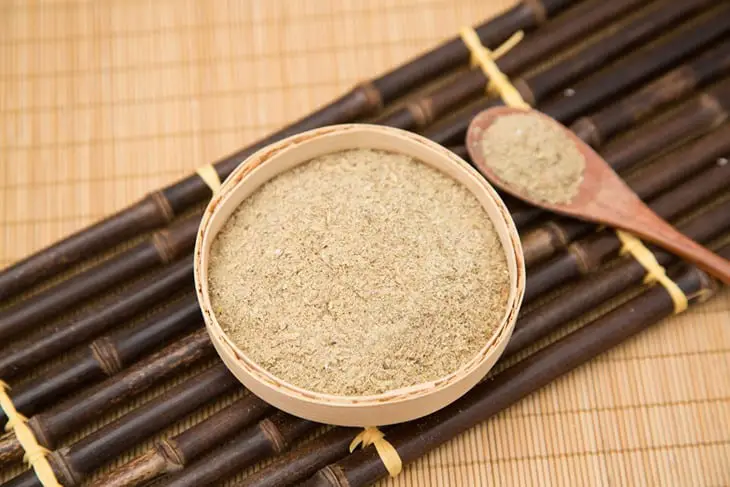
Rice bran is the reddish-brown outer parts of the rice grain, including the germ, pericarp, and aleurone layer. Its neutral flavor makes it a great choice for oat bran substitution without any noticeable changes in the recipe.
Rice bran takes the place of oat bran in muffins, breakfast cereals, bread, cookies, and other baked recipes. You can use rice bran based on the 1:1 formula – one cup of rice bran for one cup of oat bran.
If you are allergic to gluten, rice bran will be your savior, thanks to its gluten-free property. But be careful when swallowing food from this ingredient since it can cause choking. So, remember to add more water to reduce its dryness.
This byproduct of rice is an abundant source of fiber, vitamin E, and antioxidants. As we’ve mentioned, fiber is a secret enemy of high blood pressure and cholesterol level. Vitamin E supports your immune system and is a miracle for your skin.
4. Corn Bran
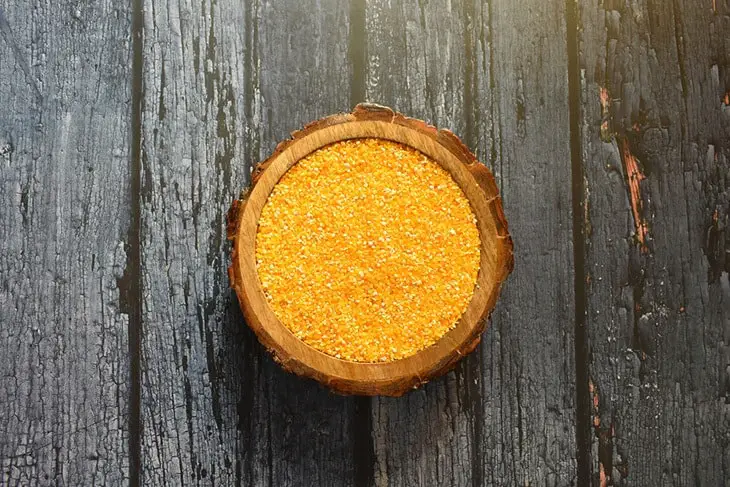
Corn bran is a byproduct when milling corn, coming from the exterior layer of the corn kernel. You can add a touch of semi-sweet and mild flavor to the dish when substituting oat bran with corn bran.
This ingredient is linked to many dishes, ranging from bread, cereals, pancakes, cookies, tortillas to granola. If you seek something new, you can make cornflakes at home for snacks or breakfast cereals. No one can deny the crunchy snack with an aromatic flavor of corn.
Sadly, its bland taste may not whet your appetite when making a corn bran muffin. But you can trust its nutritional benefits.
Like rice, this bran also contains no gluten, benefiting those with celiac disease. Corn bran’s high-fiber content makes it a healthy choice for combating diabetes, obesity, and high blood pressure.
Even better, zinc and iron found in corn are vital micronutrients for body growth and boosting the immune system.
5. Whole-Wheat Flour
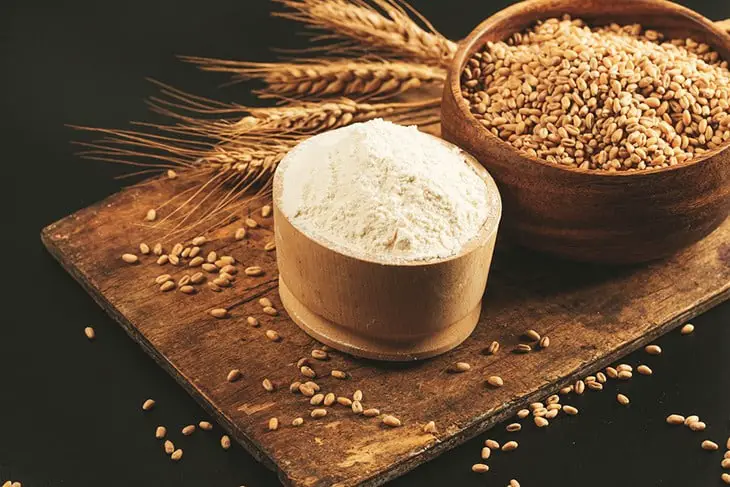
As its name suggests, whole-wheat flour is derived by grinding the entire wheat grain, including the bran and germ. This element explains why we can substitute oat bran with this ingredient.
Whole-wheat flour gives a nutty kick and adds a rich brown hue to baked goods. You can utilize this flour in bread, cakes, tortillas, cookies, or any kind of flour-based recipes.
Nothing is removed when grinding, so you can rest assured that all the nutrients remain unchanged. Whole-wheat flour contains a high amount of fiber, protein, antioxidants, and minerals like magnesium.
Regularly consuming this ingredient is proven to eliminate the risk of diabetes, obesity, and heart disease. However, take caution if you have celiac disease, as you can find some traces of gluten in this flour.
6. Chickpea Flour
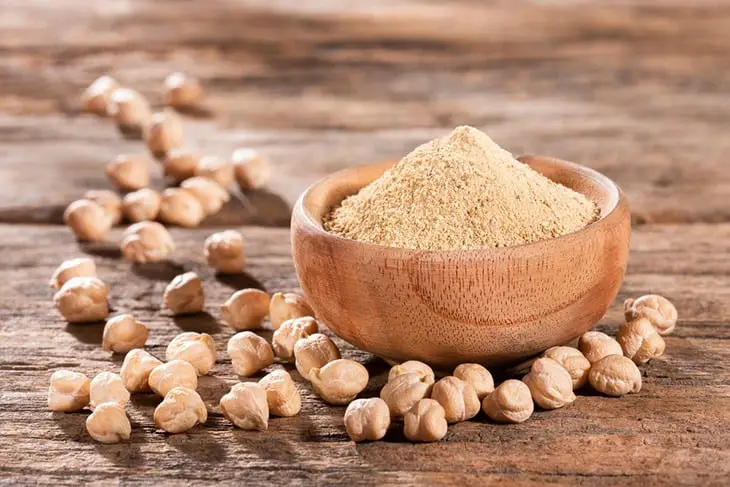
A member from the legume family on this list is chickpea. Its flour is obtained by grinding dried peas into powder and somewhat resembles the nutty and earthy flavor of oat bran.
You can swap chickpea flour itself or any chickpea flour substitute for oat bran in most batter-based recipes. Although this flour is usually found in Indian dishes, you can also utilize it instead of oat bran in pancakes, waffles, or flatbread.
Vegans will love this flour for its rich plant-based protein. Chickpea flour is the main source of protein in a vegetarian meal instead of eggs, fish, and meat.
Apart from protein, chickpea is full of fiber and minerals like iron and magnesium. Iron helps to produce hemoglobin – a substance in red blood cells enabling them to carry oxygen to the lungs. Meanwhile, magnesium aids in blood pressure control.
7. Buckwheat Seeds/Flour
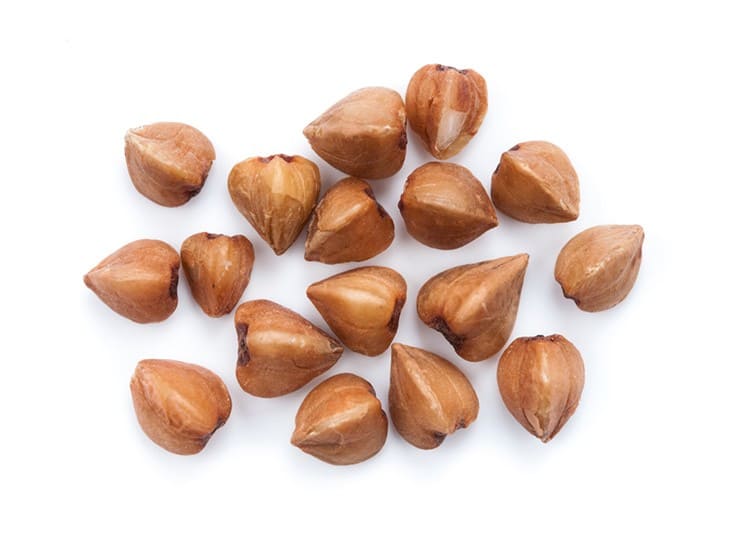
This pick is an exceptional candidate in our pick since it comes from a flowering plant, not a kind of cereal. Buckwheat seeds have a grain-like texture and share many properties with cereals. So, you can always replace it with any cereal, including oat bran, in a pinch.
Like oat bran, you can come across buckwheat flour in many flour-based dishes, such as pancakes, crackers, cookies, sponge cakes, etc. Besides, its nutty and earthy flavor pairs well with citrus, herbs, and cheese.
If you only have buckwheat on hand, you can make coarse flour by a blender or simply serve whole grain with salads and protein.
Buckwheat is considered a superfood thanks to its rich nutrition. You can receive a significant amount of vitamins and minerals from these seeds. Manganese, copper, and magnesium are just to name a few, promoting healthy metabolism, heart health, and blood sugar control.
For those who keep off oat-based products for their gluten content, say hello to buckwheat with its gluten-free and non-allergic features.
8. Almond Flour

This option is the most expensive alternative on our list. But you should give it a try to experience a flavorful twist in your recipes. Almond flour is made from finely ground nuts.
Replacing oat bran with almond flour brings out a sweet, nutty flavor and a hint of fat. Oats are much blander than almonds, so adding some almond flour is the secret to making a more flavorful dish.
Because of its fat content, this flour is not a good substitute when making crusty bread since it will leave a flat and dense texture. It is best used for moist baked recipes like cupcakes or muffins.
Fed up with baked goods? Take a fresh wind with an almond smoothie. Blend some frozen fruits like berries, milk, yogurt, and some almond flour in a food processor. The almond makes a twist with its nutty flavor.
It is not overrated to say that almonds are the king of nuts, thanks to their abundant nutritional profile. You can find lots of fiber, healthy fats, and protein as well as other vitamins and minerals like vitamin E and magnesium in almonds.
Adding almonds to your diet helps lower blood pressure, blood sugar level, and cholesterol level. They can also erase hunger and send a feeling of satiety to support weight loss.
9. Flaxseed
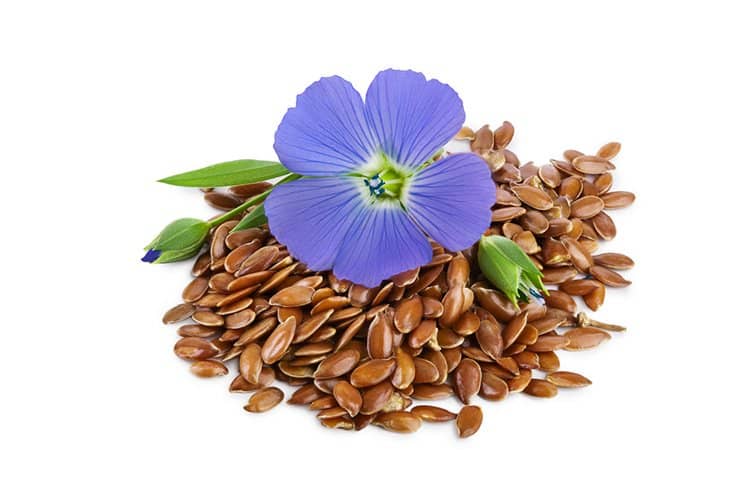
Another choice in the seed group is flaxseed or linseed, which is from a flowering plant. There is no common between flaxseed and oat bran except their high-fiber content. That’s why we put it on this list to maintain the required fiber in your dish.
To make it more comparable, you can grind it into powder, but we prefer the whole seed for a fully nutty taste. Flaxseed can appear in muffins, pancakes, cookies, cereals, and even in smoothies, yogurts, and salads.
Mixing flaxseed with the batter for muffins can neutralize the sweetness. But remember to use only half as much as oat bran when replacing.
Flaxseed is high at Omega-3, which is nearly equal to the amount in fish. So, if you are not into fish or a vegan, consider adding this seed for complete nutrients.
Not to mention, they contain a wide range of vitamins and minerals, including Vitamin B1, vitamin B6, calcium, folate, magnesium, iron, and phosphorus. These properties will control cholesterol level, lower blood pressure, and promote heart health.
10. Sunflower Seeds
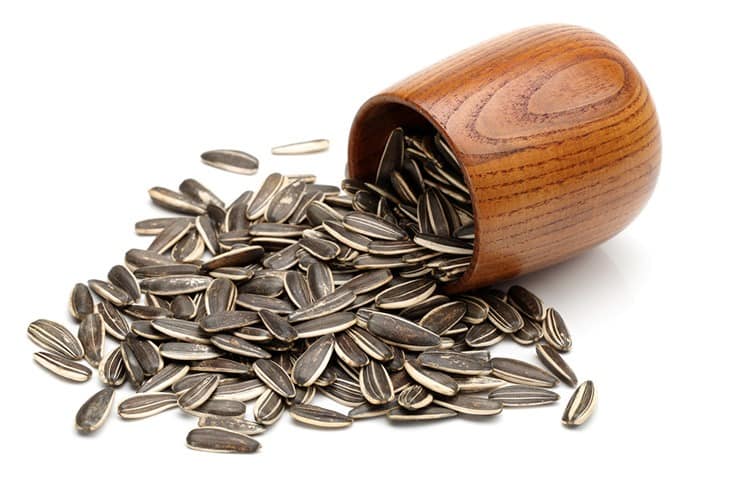
And the last spot belongs to another seed of flowering plants – Sunflower seeds. While oat bran is rather bland and mild, this seed gives you a nutty and grassy flavor. So, what makes it appear on our list? It is the rich amount of fiber that proves it a decent oat bran substitution.
Like flaxseed, sunflower seeds can be used in muffins, cookies, bread, cereals, salads, or smoothies. It is better to roast the seeds before mixing them in the batter to enhance its flavor.
These seeds are also a great ingredient for snacks like caramel sunflower popcorn, sunflower bars, or simply roasted seeds. Do you have a sweet tooth? Time to try sunflower seed brittle – a crowd-pleaser at any party.
Not to mention fiber, sunflower seeds contain plenty of healthy fat and protein for a nutritious meal. They are also incredibly rich in vitamin E and selenium.
Vitamin E is not only a remedy for damaged skin, as you may know, but also a booster in cell generation for better healing. Meanwhile, selenium is a powerful antioxidant that regulates metabolism and benefits the digestive system.
Frequently Asked Questions
Below are some questions related to oat bran that you might wonder about when cooking it.
What Is Oat Bran And Its Health Benefits?
Oat bran is the exterior layer of oat groats, which is beneath the inedible covering and sold separately with the steel-cut oats. You can taste a mushy and mild flavor from oat bran.
Eating oat bran links to many benefits. It is rich in soluble fiber – a cholesterol-lowering property – and low in fat, making it a great candidate for diet. There are nearly seven grams of fiber found in one serving.
Also, oat bran contains polyphenols – an antioxidant protecting your body from free radicals. So, frequently eating oat bran will help you fight off chronic diseases rooting from too many free radicals.
What Is The Difference Between Oatmeal And Oat Bran?
The most obvious difference between these two is their texture. You can notice that the oat bran is like coarse flour, but the oatmeal is the whole grain.
Their origin is also a significant difference. Oat bran and oatmeal are both originally from oat groats. Oat bran is the outer husk, while oatmeal is the inner body.
What about nutrition? Oat bran proves itself a nutritional powerhouse that outweighs the other. It delivers 50% more fiber than oatmeal. Not to mention, the amount of protein and calcium of oat bran is also greater than oatmeal.
How To Make Homemade Oat Bran?
First, pick the whole oat groats that come with bran on them. Next, grind them in a food processor until you see a coarse texture. Then, sift the ground flour to separate the bran. Finally, store the oat bran in a jar or any air-tight container for later use.
To enhance its nutty flavor before making muffins or other baked food, toast the oat bran in an oven at 375°F for 5 – 7 minutes, or until it slightly turns brown.
Conclusion
Sometimes, you can not put your hands on some ingredients when making your beloved oat bran muffins. There is no need to worry because you can always replace it with other alternatives.
You can pick up one of the top 10 options for the oat bran substitution mentioned above. Otherwise, it is up to you to find another ingredient whose flavor, aroma, and nutrients please you the most.

